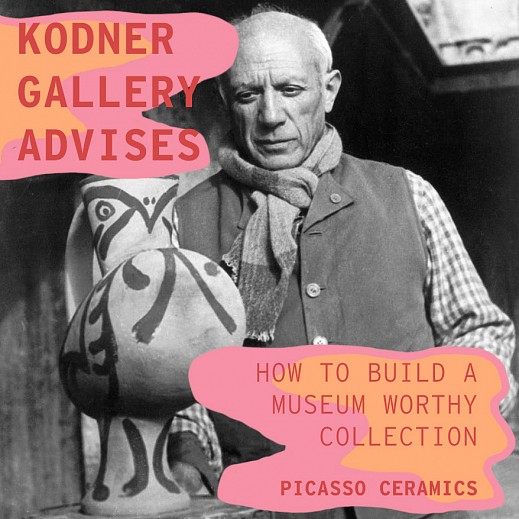While visiting the small coastal town of Vallauris in the south of France, Pablo Picasso was inspired to explore the medium of earthenware clay. There he met Georges and Suzanne Ramié. The couple owned the Madoura pottery workshop and agreed to open their studios to Picasso. Together, they developed a successful and collaborative agreement that flourished for over 25 years.
The ceramics provided Picasso an alternative to his already very desirable and high-priced paintings - he was intent upon making his artwork more accessible to the public. Each Madoura pottery piece by Picasso was created in an edition of 500 or less.
Utilitarian and democratic, these vessels progressed into more abstract, exploratory sculptural forms. Picasso's signature use of line, color, texture, and dimension merged seamlessly with this new medium, as he translated many of his earlier designs to clay platters, plates, and pitchers.
Due to the magnetic quality of his work, his ever-expanding collector base grew keenly interested in acquiring his ceramic works. Though he intended for his work to be available at a more affordable price point, this desire did not last. Very quickly, a robust, motivated, and healthy demand developed for works in this new medium. This desire for Picasso's Madoura ceramics has continued in the marketplace of today. |
|

